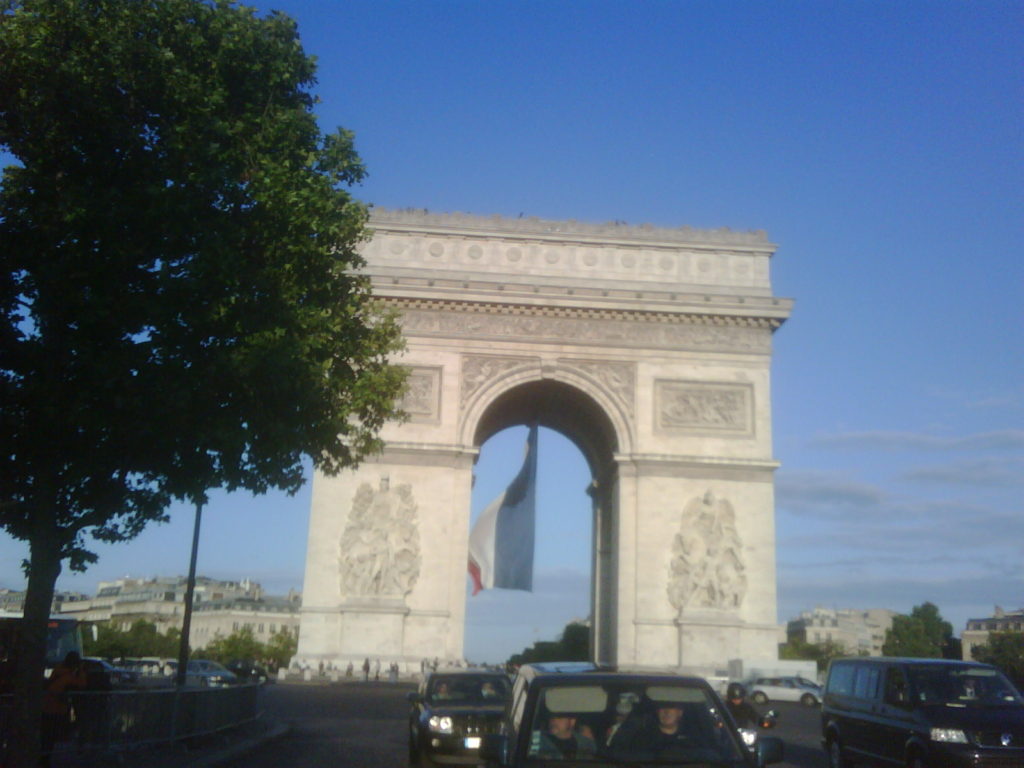Thomas Jefferson, who was the US minister to France for some years before he became president of the United States, once said of Paris:
A walk about Paris will provide lessons in history, beauty, and in the point of life“.
Since first travelling to Paris, I have continued to learn more about the place, fun stories, unexpected things, new openings. I remember going to Le Procope for a meal and learning that it is Paris’s oldest cafe where the French Revolution’s slogan “liberté, égalité, fraternité” was coined. The cafe is an entire history lesson in itself: it is where Robespierre and the Montagnards met on the eve of the Revolution, where Benjamin Franklin drafted the alliance between Louis XVI and the American republic, where playwright Piron quareled with Voltaire, and where Voltaire created Candide.
History aside, one does chuckle at the thought of Parisians parking illegally as defence of personal liberty and how they savour window displays as thought they were public museums.
Historically, the compatibility of liberté and égalité was not doubted in the first days of the 1789 Revolution. Thus the Abbé Sieyès, the clergyman and political writer who is considered one of the chief political theorists of the French Revolution and who penned the pamphlet “What is the Third Estate?” (the “third estate” refers to the common people of France) that became de facto manifesto of the Revolution, considered that only liberty insured equality, unless the latter was to be the equality of all dominated by a despot; while liberty followed equality insured by rule of law. The abstract generality of law (theorised by Jean-Jacques Rousseau in The Social Contract) thus insured the identification of liberty to equality, liberty being negatively defined as an independence from arbitrary rule, and equality considered abstractly in its judicial form.
Thus, while in the twentieth century, “liberalism” started acquiring many different strands and became wider and wider in meaning, “classical” liberalism as an important part of the ideology of the French and the American revolutions was more of a liberty (equally, for all men) from arbitrary, despotic and monarchical rule.
“Fraternity”, however, does sit a little uncomfortably within this trinity, and seen with today’s eyes, there seems more tension between the concepts of liberty and fraternity than that between liberty and equality. Despite that, this triad has survived more than 200 years til today, and is certainly an idea that not only captured the imagination of the times but left indelible imprint on history: the historical significance of the slogan “liberty, equality, fraternity” encompasses also the Universal Declaration of Human Rights, whose first article states (an illustrated version is here):
All human beings are born free and equal in dignity and rights. They are endowed with reason and conscience and should act towards one another in a spirit of brotherhood.
In an age of social media and 140 words, these words may sometimes be forgotten. And perhaps the absence of world wars for the last 70 years that seriously threaten these concepts sometimes tricks us into forgetting how much these words have shaped our twenty-first century world. In reflection, one sees how a number of ideas originating from France have shaped very much our modern world and how the French Revolution changed the course of world history.
P.S. For those following the footsteps of the Revolution in Paris, more places of interest include Place de la Bastille (no remnants of the Bastille that was stormed remains, and the column in its centre commemorates events of the July 1830 revolution, but the Paris Opera is now here), the Jeu de Paume (where representatives declared their intention to draft a new constitution), the Palais de Justice which was the Revolutionary Tribunal and its adjoining Le Concierge which was the final stop for those on their way to the guillotine. The Place de la Concorde, today with its beautiful fountain and all, was called the Place de la Revolution during the Revolutionary years and its bloody past is commemorated in an obelisk marking where the guillotine of Louis XIV and Marie Antoinette and many others took place.
Have a look at our map of Parisian 1789 hotspots:





